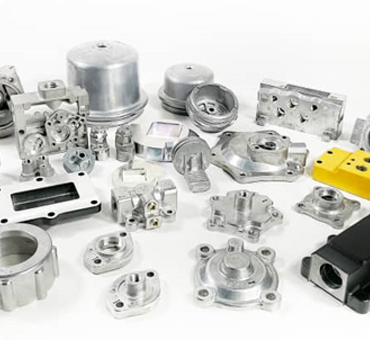The Marvels of Die Casting: Precision, Efficiency, and Innovation
March 23, 2024
Die casting is an essential element in the field manufacturing industry, offering an approach that combines accuracy and efficiency in the production of complex metal parts that are essential to different industries. From automobiles to electronics die casting has an important role in the development of the future of technologies as well as infrastructure. This article explores the details of die casting and focuses on the processes, their benefits, applications as well as the ongoing advancements.
In its essence, die casting is the process of introducing of hot metal into molds, referred to as dies under the pressure of a high. This allows the development of complicated shapes and precise tolerances. This makes it perfect for the mass production of parts that are consistent in high-quality. Most dies are constructed of steel that has been hardened, that is able to withstand the extreme heat and pressure that is required in the process of casting. The material, typically zinc, aluminum or magnesium alloys is melting in a furnace prior to being put into the cavity with high speed.
One of the main benefits of die casting lies in the ability of die casting to create parts that have exceptional accuracy in dimensional and surface quality. High pressure applied throughout this process guarantees that melts of the metal flow through every crevice in the die. This results in fine details and sharp edges. This degree of accuracy is especially important in fields like aerospace and automotive where the components need to be in compliance with strict performance requirements. Furthermore, die casting removes the requirement for intensive post-processing and reduces the overall time to production and cost.

Die casting applications cover a broad range of sectors, which demonstrates the versatility and flexibility. Within the automotive industry Die-cast products are widespread and are found in engines as well as transmission housings as well as structural parts, due to their light but durable characteristics. The electronics industry also is dependent on die casting for making connectors, heat sinks and housings where the electromagnetic shielding and thermal conductivity is a major consideration. From the consumer electronics industry to industrial machinery Die-casting plays the key role in shaping the present-day environment. For more information please visit here Senadiecasting
Recent technological advances in die casting have enhanced the capabilities as well as its sustainability. With the introduction of vacuum-assisted casting, for instance minimizes porosity within the final product and improves quality and mechanical properties. It also improves the surface finish. Furthermore, the incorporation of robots and automated processes improves efficiency in the manufacturing process which improves efficiency while also reducing errors made by humans. In addition, efforts to create environmentally friendly alloys and improve use of energy contribute to manufacturing industry’s sustainability initiatives, which align with international initiatives to promote more sustainable manufacturing practices.
Although it has many advantages however, die casting isn’t unaffected by its difficulties. Costs for initial tooling could be substantial, especially when it comes to intricate parts that have complex patterns. Additionally, keeping the dies and maintaining the same quality during the entire production process requires an attention to detail that requires knowledge. The advancements in the field of computer-aided design (CAD) and software for simulation has helped to overcome the challenges. They allow engineers to improve designs and identify potential issues before the production process begins.